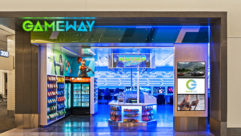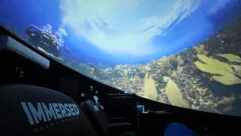Digital Signage is All Grown Up
When it comes to digital signage, industry maturity means technology that can handle any client scenario, without too much cost or extra effort.
Another digital signage expo has come and gone and i have to say, this year’s show was by far the best ever. The level of product maturity is amazing. Last year there were solution providers that showed what you might call an attempt to play in the digital signage game. This year it was apparent many of them had turned that technology into something great. As I mentioned to many of my peers, there were several small companies in the front of the room that had moved there from the rear as their solution grew up.
My company, which integrates digital signage and other AV systems, went to this year’s expo in Las Vegas with a very specific agenda—to find a tool that will give us the flexibility we need to build the kind of custom solutions we’re being asked to provide. Ideally it would also allow us to build very vertically oriented digital signage systems that we could then bring to market. Basically, we needed something that didn’t require us to write massive amounts of custom code ourselves, which was something we’ve had to do in the past to tailor solutions to particular customers. We needed a true development tool.
Custom and Sort of Custom
About 20 percent of the solutions we’re asked to provide these days are what I would consider custom. They are solutions that don’t fit any of the out-of-box scenarios that most signage platforms are designed around. I’m not saying that 80 percent of the solutions we provide are plain vanilla. It’s just that most tailor-made systems can be designed without any modification to the core product, but a fair chunk of our projects can’t.
Some of the things we are working on regularly are kiosks for information delivery, digital directory boards, and interactive wayfinding, just to name a few. All of these require either some level of interactivity and/or intense data integration. We’d trade our kingdom for development tools that make this easier than it’s been in the past.
We were happy to find that number of solution providers have put some serious development into their products in a very short time. One that impressed us was UCView Media (ucview.com), which sells software, servers, and players, as well as software as a service (SaaS). The best news is that the digital signage industry is finally realizing that the backend and the development platform are where their efforts should be focused. The fact is, content playout is all the same. Over the past couple of years, we’ve started to see that everyone’s player ability is about equal. Differentiation among platforms is no longer defined by what it can do at the edge because everyone’s player looks similar. Sure, we as integrators know what is going on under the hood and that some players are stronger than others. For example, software engines that render content at the player PC rather than just playing content without any manipulation allow for greater flexibility. But we aren’t the clients who are looking at the solutions. Clients just see familiar content and layouts on multiple displays and we’re chartered with explaining the differences. Increasingly, the differences aren’t things that they can easily see.
And this is where industry maturity kicks in. The focus at Digital Signage Expo has evolved. People nowadays talk more about overall solutions, including the client interface and a platform’s management capabilities. You don’t even hear startups offer the old “we can do multiple zones of content and a crawl” pitch because, frankly, everyone can do that now and everyone’s seen it. Digital signage has become less about what you see and more about what you know, such as how to manipulate content and determine its effectiveness. Those are the key differentiators among software solutions.
Getting in Touch with Signage
When it comes to hardware, touch integration has become a big deal, but again, not for its novelty. People are becoming accustomed to interacting using their fingers, but now price points for integrating touch into digital signage systems have finally moved into the affordable range. (Don’t get me started on the other hardware trend—3D. I get a headache after looking at autostereoscopic 3D for only a few seconds, and others have said the same. I can’t see it taking the out-of-home segment by storm until the technology gets much better.)
We have clients who want to do interactive systems all the time, but in the past they’ve been blown away by the initial cost for what they feel is simple technology. Society has grown more comfortable with the “first touch,” that moment when they don’t think twice about tapping a screen to reach a desired end. We should give thanks to the ATM for hastening this acceptance, to say nothing of the debt we owe Apple’s iPhone/iPod Touch and other devices in that class.
But digital signage isn’t the Apple Apps store. It’s great that people talk about all the cool interactive things that can be done via touchscreen digital signage, but when we as integrators are asked to provide such new capabilities and tell clients what it will cost, well, it’s difficult. Clients don’t yet understand that connecting data and coding interactivity into a solution is not that simple. Fortunately, it’s getting easier, which should translate into lower costs. Wayfinding is very big for us right now; we expect it will get bigger.
In all, I’m more excited than ever with where the digital signage industry is going. Solutions are now available for virtually any situation a client could face. Displays themselves cost less and have beefier electronics (the new Sharp PN-E series for one), player hardware is at industrial strength, and content providers like Blue Pony (bluepony.com) really get the market. Some of our favorites? NEC and Sharp for traditional commercial displays, AOpen for a rock-solid platform, and Tightrope and CoolSign for robust, mature platforms. These companies and others have proved digital signage can be done right, and that clients can expect rock-solid solutions. AV
Kris Vollrath is vice president of Advanced AV in West Chester, Pa., and a frequent speaker on digital signage applications and technology.










